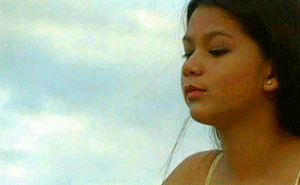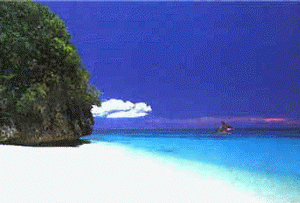Tribung PinoyThe Philippines
Brief History
Philippine Government
The Gateway
Economic Profile
Arts & Culture
Indigenous People
Speak Filipino
Music & Song
Photo Gallery
Important Links
What's New?
Links to Philippine media organizations, embassies
& consulates,
public and private offices and organizations.
Click here
Philippine Flag
Click here
National Anthem
Click here
|
Mabuhay!
Welcome to the Philippines,
"The Pearl of the Orient
Seas" When a Filipino greets you with
"Mabuhay", he is saying Welcome… Aloha… Shalom… or "Long
Life."
Wherever you go in the Philippines, you are greeted with an
overwhelming cordiality which extends to home, table and entertainment.
Filipinos today number about 80 million. They are basically from
Malay stock, with predominant Chinese and Spanish mixtures. The mingling of races has
included European, American, Hindu, Arabian, Chinese, Persian and Polynesian.
Centuries of cultural and commercial contacts with the countries
of Asia and almost four centuries of domination by the Western Powers have made the
Filipino what he is today. There is in him the blending of the East and West,
so that his character exhibits curious contradictions which foreigners are apt to
misunderstand.
The
intermarriage between the Filipino and the foreigner, particularly the white, led to a
class known as the mestizo class. When one says mestizo, the obvious implication is
that the person is Spanish-Filipino. Fil-Am is the offspring of
Filipino and American parents. Chinoy for Chinese and Pinoy
(Filipino) combinations.

Typical Filipina beauty |
All other
half-breeds are qualified by the nationality of their parents. Thus, a
Filipino with American father or mother is called American mestiza; with a Chinese father
or mother, a Chinese mestiza; etc.
One common Filipino trait that commends itself to the foreigner is his
hospitality. All peoples the world over are hospitable in their own way, but
Filipino hospitality that is almost a fault. Call it naivete but the Filipino
opens his heart to a complete stranger and offers the best in his kitchen and bed
chamber.
He makes the bed for the stranger, and ask with apologies, to
take himself feel "at home", while he, the host, sleeps on the cold floor.
He prepares water for morning ablution, waits upon the table, and makes life worth living
for the stranger.
Filipinos has managed to glean the most interesting traits from
various invaders and colonizers. From the Moslems in Mindanao practicing his ancient
customs to the sophisticated native of Manila, the highly adaptable Filipino remains
totally individual. He has accomplished much today in this progressive nation and intends
to achieve even more in the future.
Filipino is greatly attached to his family and holds his elders
in high esteem. They are deeply religious and predominantly Catholic in a way that
subtly combines the old methods of relating to the supernatural.

Boracay Paradise Island |
This
multi-faceted Filipino culture, added to the natural wonders and beauty of 7,107
islands, makes the Philippines a focal point for tourists in Asia. Lush virgin
forests, majestic mountains, bountiful blue oceans and inland lakes, vast expanses of
fertile lands, delightful hot springs, dazzling fauna, and colorful varieties of flowers
and plants form the environment. The immediacy of this experience has impressed on
the Filipino a concept of beauty and intensity. This impression is well-manifested
in this website, with its music, art, beliefs and lifestyle. A little world in itself, a
nation to which many nations and many cultures have contributed their thought, their color
and their vitality.
______
*Pinoy is a short-cut for Filipino to
identify his nationality. (Diksyunaryo ng Wikang Filipino Sentinyal
Edisyon, 1998
ISBN 971-8705-32-5)
Tribu is a Philippine term for Tribe (in English), a human community developed by an
association of, and interbreeding between, a number of families, and preserving its own
customs, beliefs and organization. (The New Lexicon Webster's Dictionary of the English
Language, 1996 ISBN 0-7172-4682-5)
If you can offer any suggestions for
more topics or corrections, please e-mail me. I
hope to periodically update this page, so check back every now and then.
|